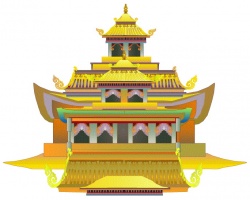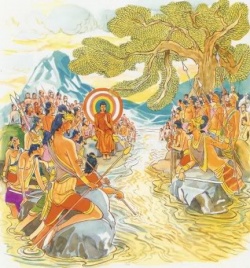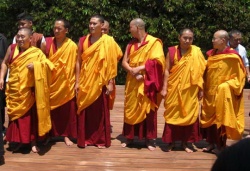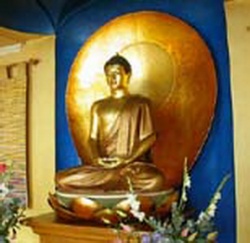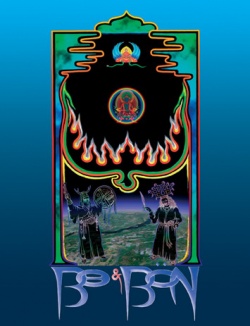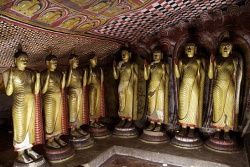What is Vaisesika Categories of ‘Guna’, ‘Karma’ and Samanya?
The Vaisesika system is next to Samkhya in origin and is of greater antiquity than the Nyaya.
It may be prior to and is certainly not later than Buddhism and Jainism.
The word is derived from Vishesa which means particularity or distinguishing feature or distinction.
The vaishesika philosophy, therefore, is pluralistic realism which emphasizes that diversity is the soul of the universe.
The category of vishesa or particularity is dealt with at length in this system, and is regarded as the essence of things.
===Guna or Quality===
According to Vaisesika philosophy, quality is that category which subsists in substance but in which no other quality or action can in here.
Qualities cannot exist without substance and hence they are said to be other-dependent.
As has been stated that only substance can be the material or constitutive cause of action.
It is of secondary help in the action.
In view of the fact all qualities are dependent upon substance; there cannot be any quality of quality.
Quality also lacks action or motion.
It resides inactively in its substratum, the substance.
In this way, it differs from both substance as well as action.
Distinction of Quality:
There are twenty-four qualities, such as:
1) rupa or colour,
(2) rasa or taste,
(3) gandha or smell.
(4) sparsa or touch,
(5) sabda or sound,
(6) samkhya or number,
(7) parimana or magnitude,
(8) prthakatva or distinctness,
(9) samyog or conjunction,
(10) vibhaga ordisjunctoin,
(11) paratva or remoteness,
(12) aparatva or nearness,
(13) bodhi or cognition,
(14) sukha or reversion,
(15) dukha or pain,
(16) iccha or desire,
(17) dvesaor reversion,
(18) prayatna or effect,
(19) gurutva or heaviness,
(20) dravyatva or fluidity,
(21) sneha or viscidity,
(22) samskara or tendency,
(23) dharma or merit and
(24) adharma or demerit.
These qualities have been further subdivided, as various tastes such as sweet, sour, saline, bitter, etc., or the sounds such as the articulate and the inarticulate.
Magnitude is further divided into very small, medium and very big.
Numbers start from one and proceed upwards.
===Conjunction and Disconjunction===:
Conjunction is the noun predicated of the relation of meeting of two substances capable of existing apart such as the relation of the hand and the pen.
The causal relation is not a conjunctive relation because the separate existence of the cause of the effect is not-possible.
Disconjunction is the name of the ending of conjunction or separation, such as happens when the pen falls from the hand.
In vaisesika philosophy, three kinds of conjunctions are accepted, such as:
(1) Anyatarkarmaj - Where one substance comes and meets or conjoins another.
(2) Ubhaya Karmaj - Where the conjunction takes place as the result of activity on the part of both the substances such as when two wrestlers meet.
(3) Samyogaj - Where one conjunction takes place through the medium of another conjunction, such as, the hand and paper are in conjunction when the hand touches the pen and the pen the paper.
This is called samyogaj samyog.
Disjunction has been subdivided into three, on-the same basis as conjunction. Such as -
(1) Anyatar Karmaj - Where the action of one of the substances leads to disjunction as when the leaf falls from the tree.
(2) Ubhaya Karmaj - Where the disjunction of the two takes place through activity in both the substances as when two wrestlers break apart.
(3) Vibhagaj - Where one disjunction leads to another as when the conjunction between the hand and the paper is ended when the pen which is the link between the two, is put down.
Remoteness and Nearness also have two distinctions - spatial and temporal.
Temporal remoteness implies oldness while nearness indicates madernity. In the same way, spatial remoteness is indicative of great distance while spatial nearness denotes proximity.
===Fluidity and Viscosity===:
The cause of liquid substances flowing is their fluidity, such as is possessed by water. Similarly, substances like butter have the tendency to conjoin and form lumps, the tendency being named viscidity or sneha.
Samskara or tendency also has three distinctions:
(1) Vega or Velocity - by virtue of which an object possesses motion,
(2) Bhavana or feeling - due to which there is memory of recognition of some subject,
(3) Sthit Sthapakatva or Oscilleation by means of which some substance returns from a long distance to its original position such as a rubber ball.
Merit is a virtue which leads to proper activities and results in pleasure.
Demerit is sin which leads to improper activities and causes pain.
If all these distinctions of the various qualities were to be counted, their total number would be well nigh-stupendous, but in these twenty four qualities only the basic qualities have been counted.
The other qualities are only the distinctions of these and are included therein.
In this way these twenty four qualities are fundamental and it is by their conjunction that the other compound qualities are formed.
===Karma or Action===:
Action or Karma is the commonly used name of the fundamental dynamic qualities of substance.
The inactive manifestation of substance is quality and its active manifestation is action or mobility.
Substances combine and separate because of action.
Action has no quality. Quality is dependent upon substance.
Action cannot subsist in all pervading substances because in them there is no change of position.
Hence, the basis of action can only be material substances like the earth, air, /ire and mind.
==Distinctions of Karma===:
There are five distinctions of karma:
(1) Utksepana or throwing upwards. In this way, due to action the conjunction takes place with the higher plane.
(2) avakespana or throwing downwards in which action leads to conjunction with the lower plane.
(3) akunchana or contraction, which activity is designed to create conjunction in an ever nearer sphere such as twisting the hand.
(4) Prasarana or expansion.
(5) Gamana or locomotion.
Actions other than the first four are comprehended by locomotion.
The activity of substances such as earth, water, fire, etc. is perceptible but the activity °f an imperceptible entity like the mind cannot be known by perception.
===Samanya or Generality===:
Generality is that category by virtue of which various different individual beings are enumerated in one class and called by a common name.
Just as all beings are called by a word or term indicating class S the examples of which are man, horse, cow etc.
These have some general or common quality which is to be found in the entire class and is its characteristic.
Objects or individuals possess similarity because of the general quality.
In the consideration of the general quality, Indian philosophers have subscribed to one of the following three opinions:
Three Different Opinions Concerning Generality:
(1) ===Nominalism===:
According to this school of thought generality is no essential quality but merely a name which gives similarity to the beings belonging to its class and distinguishes it from other classes only by virtue of this name.
The general has no individual or separate existence.
Among the Indian philosophies it is the Buddhist philosophy which has accepted this view.
(2) ===Conceptualism===:
The second view concerning generality is conceptualism.
According to this view, the general quality has no existence apart from the individuals and neither does it come from outside and enter into the individual.
The individual and the general cannot be separated from each other.
It is the essential quality or the eternal form of general individuals which is apprehended by our mind or intellect.
This point is to be found in the Jaina and Advaita Vedanta system of Indian philosophy.
(3) ===Realism===:
The third view of generality is realism According to it the general is neither a mental thought or concept nor merely a name but has its own individual existence.
The generals are eternal categories which, although separate from the individual, still pervade them.
In this way, the general is included or mixed in individuals.
It is only because of the general that there is any similarity between different individuals.
It subsists m substance, quality and action.
It is because of general that they are called by the same name or are ^aid to belong to the same class.
This view is propounded by the Nyaya-vaisesika among the systems of Indian philosophy.
===Distinctions of Generality===:
From the point of view of pervasion generality is of three kinds - para, apara and parapara.
'Para' is the most comprehensive, such as existence.
'Apara' is the name given to the least comprehensive such as potness.
The third distinction, 'parapara' is between para and apara, an example of it being fluidity.
With relation to existence it is apara, and with relation to potness it is para.
